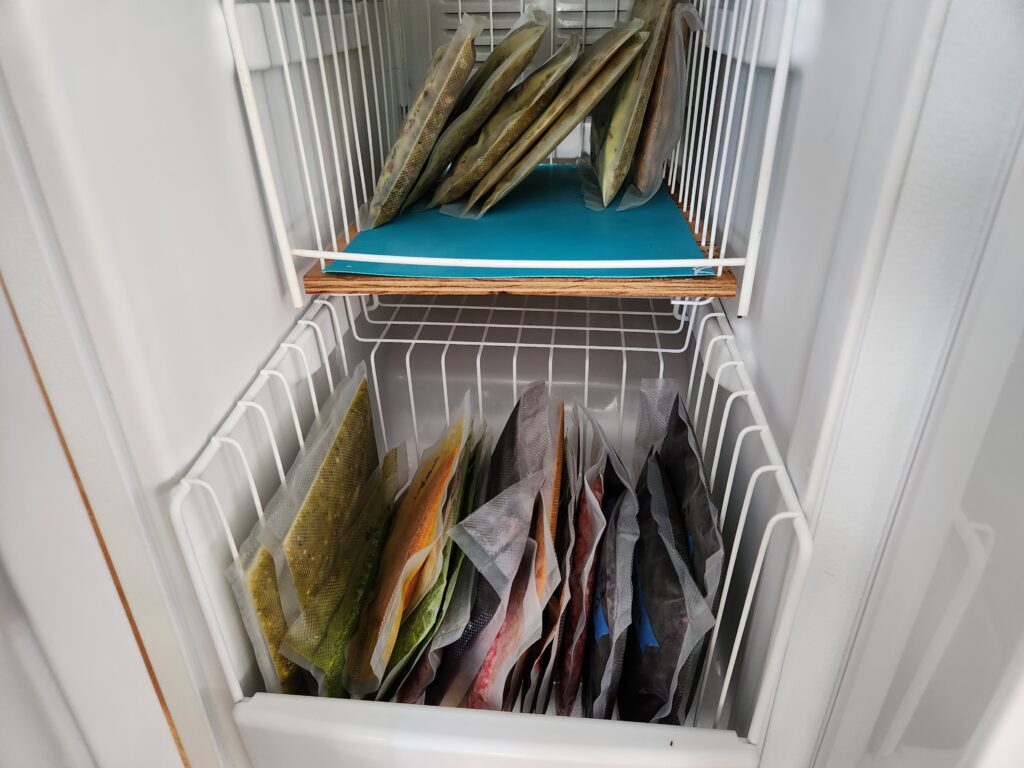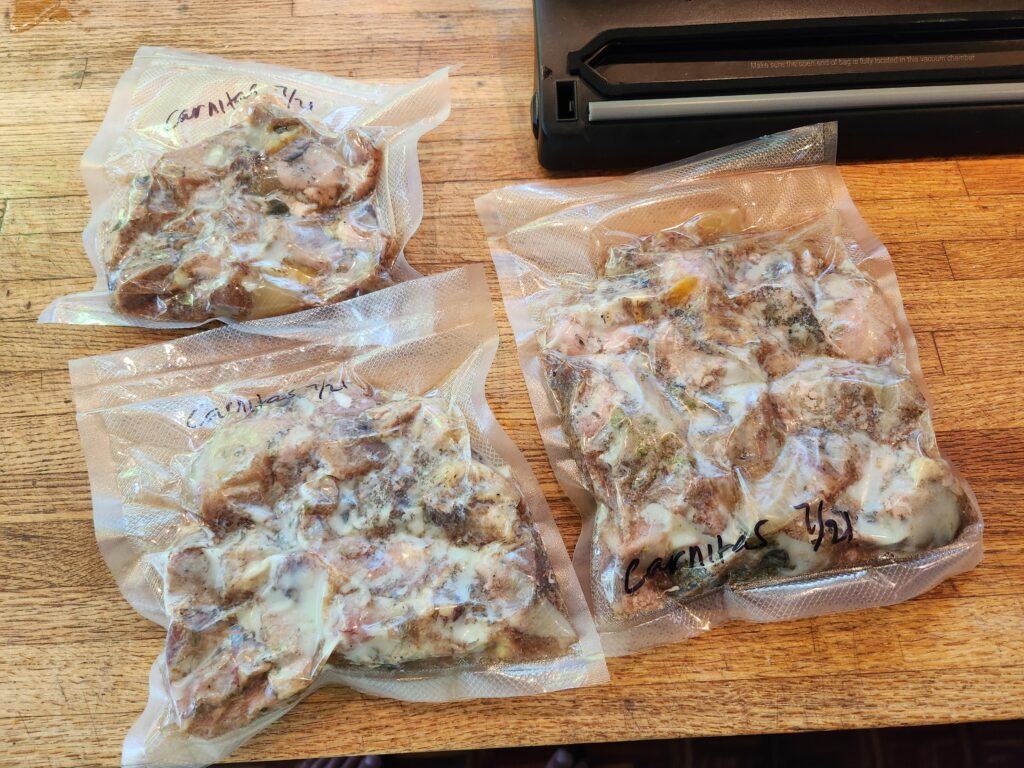Vacuum Sealer

This little baby right here is what it’s all about! You can get this one on Amazon for about $100, but there are many different models available.

If you’re sealing something with limited liquid content, then this thing is the bomb! I freeze my sealed stuff flat so I can store them in the freezer like a card index; my own private food library! Note that these are NOT full meals – they are the building blocks (literally) for many different meals that would otherwise require lots of time to make from scratch.
Most vacuum sealers have a moist food option, but the real problem is sealing food with liquid in it. Sadly, three things happen when you try to seal something with liquid in it:
- The liquid gets sucked out and into the vacuum chamber (and worse, possibly into the vacuum motor itself).
- The liquid cools the food bag when the sealer is trying to heat it up to melt it together, resulting in
- A big mess.
There are a few things you can do about this, but none I have found quite successful or desirable so far.
I HAVE found, however, that the bags you choose DO make a difference! These ones, for example do a much better job of sealing when there’s a bit of liquid trapped in the sealer area. These ones… are a lot more finicky. I am not sure why; maybe the second ones melt at a higher temperature that is difficult to achieve with the liquid cooling the sealing area.
How it works is pretty simple. The roll of bags is basically a big long tube. You seal one end (that little grey rubber bar on the bottom is where the heating element presses into to melt the plastic together, forming a bond. Then you drop your food in and put the unsealed end past the grey bar into the the little channel behind it (the vacuum chamber). Close the lid, press the button and presto: the air is sucked out and the bag is sealed.

